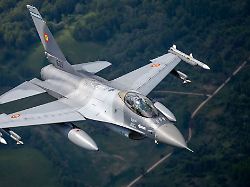Recently several NATO alarm launches
Russian planes cause unrest over the Baltic Sea
06/12/2023, 18:01
Military exercises by both NATO and Russia are fueling concerns that the conflicts will escalate. Over the past week there have been several alarm launches over the Baltic Sea due to Kremlin Air Force aircraft. Many are traveling without a flight plan or transponder signal.
According to Lithuanian sources, NATO fighter jets have gone on several missions to identify unmarked Russian military aircraft over the Baltic Sea. The Ministry of Defense in Vilnius announced that a total of 15 alarm starts had been completed in the past week. This was the largest number of missions in one week so far this year at the borders of the Baltic States in which Russian aircraft were identified in international airspace. According to the information, most of them were traveling without a previously submitted flight plan, transponder signal or radio contact.
The ministry linked this to a series of military exercises that Baltic states are conducting both nationally and jointly with NATO allies. Accordingly, the annual US-led naval maneuvers Baltops take place in the Baltic Sea, in which 50 ships and boats from 19 NATO countries and Sweden take part. At the same time, the Russian Baltic Sea fleet is also holding a maneuver, the ministry said in a statement to the BNS agency.
Estonia, Latvia and Lithuania do not have their own fighter jets. That is why NATO has been protecting the Baltic airspace since 2004. To this end, the allies regularly rotate combat aircraft and personnel to the Baltic Sea states in north-eastern Europe. The units are stationed in Siauliai (Lithuania) and Ämari (Estonia).
Next exercise started in Germany
The largest air force exercise in NATO’s history – the “Air Defender 2023” maneuver – also began on Monday. Until June 23, 25 nations and NATO will take part in the exercise under German leadership. According to the Bundeswehr, around 10,000 soldiers and 250 aircraft are involved, including 70 aircraft from Germany. Airspaces in parts of northern Germany and the North Sea, in parts of eastern Germany and the Baltic Sea, and in parts of southwestern Germany are directly affected by the exercise.
The aim is to train how a fictitious attack by an eastern attacker is repelled by the NATO allies. According to the Air Force, the first idea for the maneuver came up in 2018, before Russia launched a war of aggression in Ukraine in 2022.
